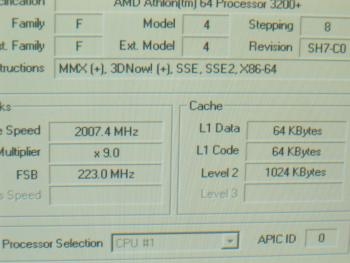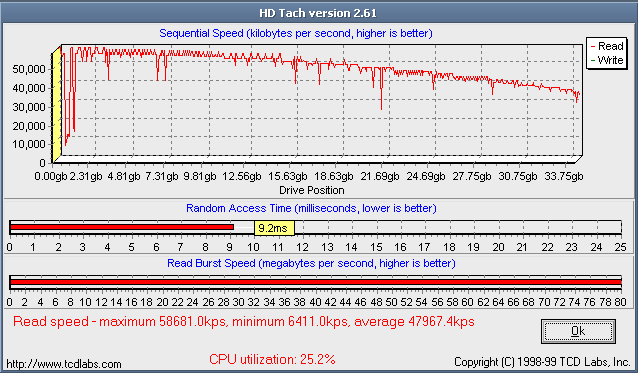System Setup
Hardware
- ASUS K8V Deluxe, Socket 754, VIA K8T800, Athlon 64, 1002.007 BIOS
- Biostar K8VHA Pro, Socket 754, VIA K8T800 Athlon 64, 01/10/03 BIOS
- ABIT IC7, Socket 478, Intel i875, Pentium 4, A18 BIOS
- AMD Athlon 64 Model 3200+, 1MB L2, 10 x 200MHz
- Intel Pentium 4 3.2GHz, 512KB L2, 16 x 200MHz
- 2 x 256MB Corsair XMS3200LLPT, 2-2-2-6 (ASUS K8V)
- 2 x 256MB Corsair XMS3500C2, 2-2-2-6 (Biostar, ABIT)
- Western Digital WD360 Raptor, SATA, 36.2GB (ASUS K8V)
- IBM 120GXP, PATA, 40GB (Biostar, ABIT)
- ATI Radeon 9800XT (412/730)
Software
- Windows XP Professional SP1
- ATI CATALYST 3.9 and Control Panel
- VIA Hyperion 4.48v (ASUS K8V, Biostar)
- Intel 5.02.1002 chipset drivers (ABIT)
- HEXUS Pifast v41
- Simplisoft HDTach 2.61
- Kribi Bench 1.19
- Sciencemark 2.0
- 3DMark 2001SE v330
- Quake3 v1.30 HQ (four demo)
- Serious Sam 2 (OpenGL HQ, SDC demo)
- LAME 3.92MMX MP3 Encoding(192CBR, U2's Pop album)
- Realstorm Ray Tracing
- Comanche 4 Demo
- X2: The Threat - Rolling Demo
Notes
Installing the OS on K8V was a pain in the ass. Using a SATA disk on the VT8237 or Promise ports requires feeding XP Pro's installation routine with drivers for the controller, via floppy disk. The needed floppy disks didn't ship with either K8V sample, meaning using a spare machine with a CD-ROM drive to create it manually. I have a spare machine for that, but first time users with no such luxury will be a little annoyed if using a SATA disk for OS install. ASUS better ship them with full retail bundles. It's a small point if your K8V comes in an OEM system, prebuilt, or you have a spare box, but ABIT manage to give you the floppy with KV8-MAX3, it should be present in all ASUS bundles that require it too.As always, benchmarks were run three times and the top and bottom results discarded, leaving the middle one for reporting. The K8V was benchmarked at 10 x 200 as well as 9 x 223. Look out for 'ASUS K8V 223' on the graphs for those results. Here's the 9 x 223MHz final clock settings.

At 10 x 200, the final clockspeed was 2002MHz (10 x 200.2 as reported by CPU-z). The Biostar clock was 1994.7MHz and the IC7 ran the 3.2 P4 at 3207.7MHz.
So, ASUS K8V and K8T800 up against another decent K8T800 performer using Model 3200+ Athlon 64 and a fast Canterwood based 3.2GHz P4 thrown in for good measure. Let's see if K8T800 is all it's cracked up to be.
Just quickly before we move on, the HDTach graph for the Raptor, hooked up to SATA1 on the VT8237. I'm going to leave comment on the SATA performance of VT8237 until I take a look at more implementations. I'm not convinced it's running up to par on K8V as tested, but I think it can be fixed.










